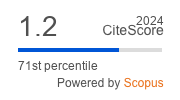Syntactic Performance in Online Written Discourse by an English/Swedish Bilingual with Asperger’s Syndrome: A Case Study
Keywords:
Asperger syndrome, code-switching, English, early balanced bilingual, syntactic performance, Swedish.Abstract
The present article described syntactic performance by an English/Swedish bilingual participant with Asperger syndrome. The participant’s syntactic performance was investigated by means of observing the participant’s status updates onFacebook, a social networking platform. Two observation sessions involved one week each, with the interval of six months between the sessions.It was theorised that the bilingual participant’s syntactic performance would be exacerbated by code-switching. The participant’s data were tagged in computer software CLAN. Results of the data analysis indicated that the hypothesis was not supported: the participant’s syntactic performance exhibited no presence of code-switching. Data analysis indicated that there was no significant difference in the participant’s syntactic performance in the period of six months.
References
- Attwood, T. (1998). The Complete Guide to Asperger’s Syndrome. London: Jessica
Kingsley Publishers. - Bell, N. (2007). Visualizing and verbalizing for language comprehension and thinking.
California: Gander. - Ben-Arieh, J., Miller, H. J. (2009). The educator’s guide to teaching students with autism
spectrum disorders. Thousand Oaks, CA: Corwin Press Inc. - Clikeman, M. S. (2007). Social competence in children. N.Y.: Springer.
- Dencker, K. &Gotffries, C.-G. (1991). The Closure of a Mental Hospital in Sweden:
Characteristics of Patients in Long-Term Care Facing Relocation into the Community. European
Archive of Psychiatry and Clinical Neurosciences, 240, 325−330. - Frith, U. (1989). Autism: Explaining the enigma. Oxford: Basil Blackwell Ltd.
- Hermann, I., Haser, V. Tebartz van Elst, L., Ebert, D., Muller-Feldmeth, D., Riedel,
A. Konieczny, L. (2013). Automatic metaphor processing in adults with Asperger syndrome: a
metaphor interference effect task. European Archive of Psychiatry and Clinical Neurosciences, 263,
2, 177–187. - Kremer-Sadlik, T. (2005). To Be or Not to Be Bilingual: Autistic Children from
Multilingual Families. Proceedings of the 4th International Symposium on Bilingualism. - Pry, R., Petersen, A., Baghdadli, A. (2005). The relationship between expressive language
level and psychological development in children with autism 5 years of age. Autism, 9, 179−189. - Tebartz van Elst, L., Pick, M., Biscaldi, M. Fangmeier, T. Riedel, A. (2013). Highfunctioning autism spectrum disorder as a basic disorder in adult psychiatry and psychotherapy:
psychopathological presentation, clinical relevance and therapeutic concepts. European Archive of
Psychiatry and Clinical Neurosciences, 263, 2, 189–196. - Wire, V. (2005). Autistic Spectrum Disorders and learning foreign languages. Support for
Learning, 20, 3, 123−128.







 Creative Commons «Attribution» 4.0
Creative Commons «Attribution» 4.0